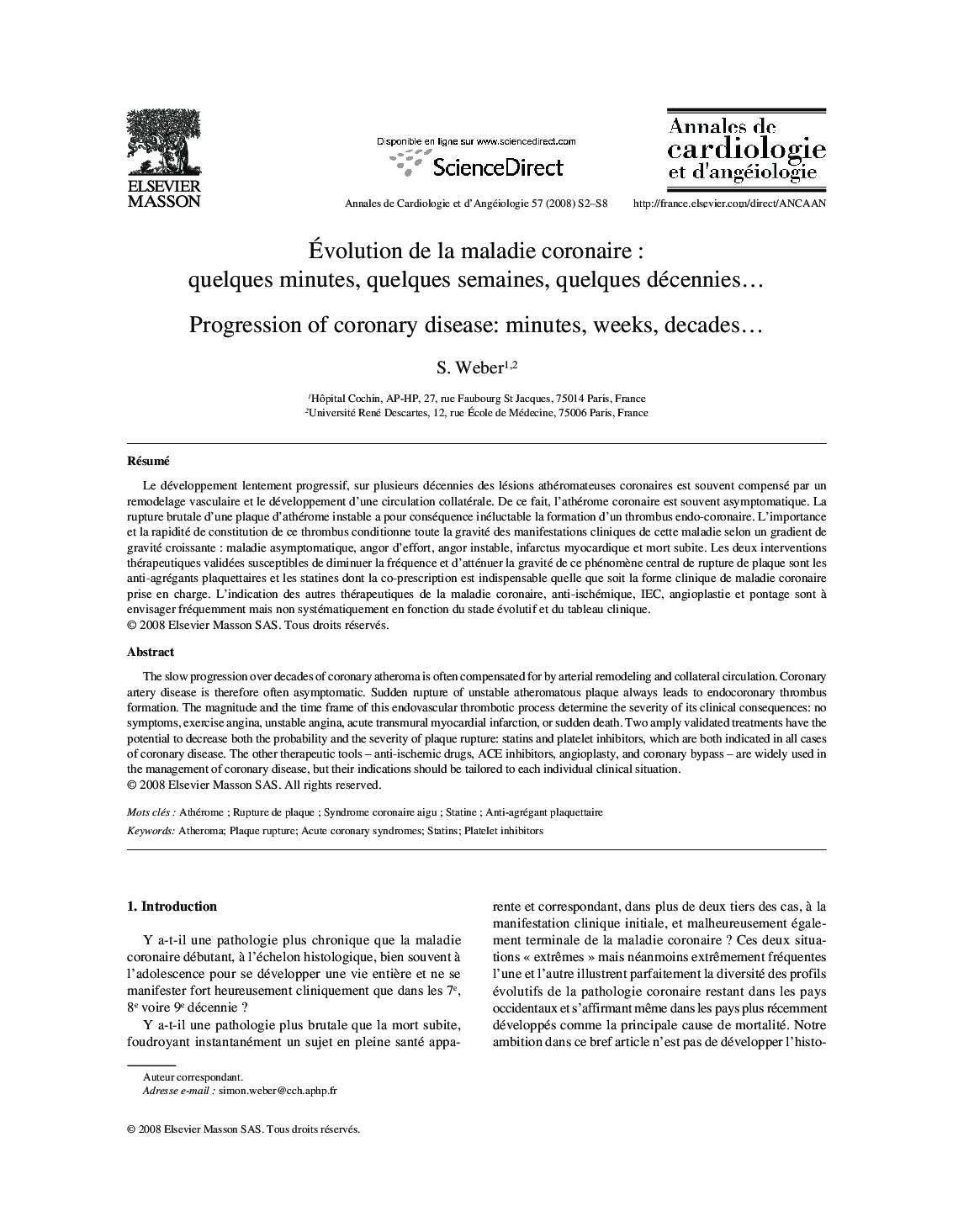| Article ID | Journal | Published Year | Pages | File Type |
|---|---|---|---|---|
| 2869549 | Annales de Cardiologie et d'Angéiologie | 2008 | 7 Pages |
RésuméLe développement lentement progressif, sur plusieurs décennies des lésions athéromateuses coronaires est souvent compensé par un remodelage vasculaire et le développement d’une circulation collatérale. De ce fait, l’athérome coronaire est souvent asymptomatique. La rupture brutale d’une plaque d’athérome instable a pour conséquence inéluctable la formation d’un thrombus endo-coronaire. L’importance et la rapidité de constitution de ce thrombus conditionne toute la gravité des manifestations cliniques de cette maladie selon un gradient de gravité croissante : maladie asymptomatique, angor d’effort, angor instable, infarctus myocardique et mort subite. Les deux interventions thérapeutiques validées susceptibles de diminuer la fréquence et d’atténuer la gravité de ce phénomène central de rupture de plaque sont les anti-agrégants plaquettaires et les statines dont la co-prescription est indispensable quelle que soit la forme clinique de maladie coronaire prise en charge. L’indication des autres thérapeutiques de la maladie coronaire, anti-ischémique, IEC, angioplastie et pontage sont à envisager fréquemment mais non systématiquement en fonction du stade évolutif et du tableau clinique.
The slow progression over decades of coronary atheroma is often compensated for by arterial remodeling and collateral circulation. Coronary artery disease is therefore often asymptomatic. Sudden rupture of unstable atheromatous plaque always leads to endocoronary thrombus formation. The magnitude and the time frame of this endovascular thrombotic process determine the severity of its clinical consequences: no symptoms, exercise angina, unstable angina, acute transmural myocardial infarction, or sudden death. Two amply validated treatments have the potential to decrease both the probability and the severity of plaque rupture: statins and platelet inhibitors, which are both indicated in all cases of coronary disease. The other therapeutic tools – anti-ischemic drugs, ACE inhibitors, angioplasty, and coronary bypass – are widely used in the management of coronary disease, but their indications should be tailored to each individual clinical situation.
